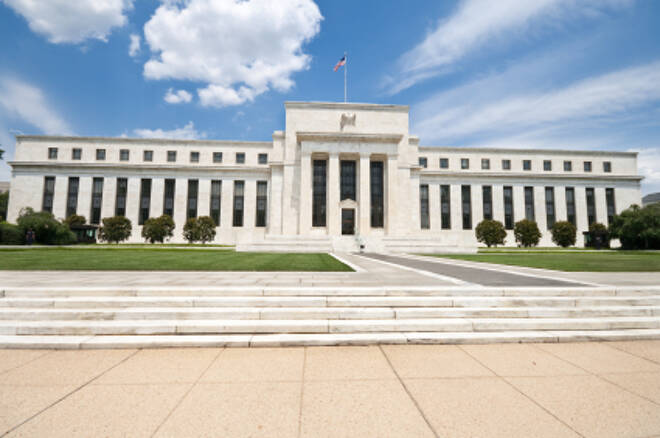Advertisement
Advertisement
FOMC Leaves Rates Unchanged; Lowers Number of Future Rate Hikes
By:
The U.S. Federal Reserve triggered a volatile reaction in the financial markets on Wednesday when it decided to leave interest rates unchanged while
The U.S. Federal Reserve triggered a volatile reaction in the financial markets on Wednesday when it decided to leave interest rates unchanged while lowering its expectations for rate hikes in the years ahead. However, its monetary policy statement suggested that rates could go up before the end of the year.
In its monetary policy statement, the Federal Open Market Committee expressed confidence in economic growth, but not enough to warrant a rate hike this month.
“The committee judges that the case for an increase in the federal funds rate has strengthened but decided, for the time being, to wait for further evidence of continued progress toward its objectives,” the statement said.
The forewarning of a December rate hike was fueled by the tone of the statement, an accompanying summary of economic projections and a divisive FOMC meeting.
Three FOMC members formed a hawkish bloc – Esther George, Loretta Mester and Eric Rosengren. They represented the most “no” votes since the December 2014 meeting. Their dissension from the statement represented an unusual split from Chair Janet Yellen’s usually united committee.
The so-called dot plot also showed a wider dispersion in individual members’ expectations. It showed that most Fed officials foresee a gradual increase of rates. However, one member expected the rate to be little changed from the 0.65 percent level all the way through 2019. Still another member put his rate expectation at 3.75 percent by 2019, more than a percentage point above the consensus.
Three members also voted against any rate hikes this year.
Although there is a FOMC meeting scheduled for November, the consensus believes the Fed won’t act then because of the U.S. election, making December the next likely time for a hike. A question was raised at Yellen’s press conference whether the move was politically-based to support the Obama agenda (Implying the rate hike has been delayed to support Hillary Clinton). Yellen strongly disagreed, citing its independence from political influence.
The FOMC also reduced is expectations both for economic growth and inflation this year, though the statement said “the labor market has continued to strengthen and growth of economic activity has picked up from the modest pace seen in the first half of this year.”
“Although the unemployment rate is little changed in recent months, job gains have been solid, on average,” the committee added. “Household spending has been growing strongly but business fixed income has remained soft.”
The Fed statement also noted that inflation has not risen to the Fed’s 2 percent target, but that target would be reached “as transitory effects of past declines in energy and import prices dissipate and the labor market strengthens further.”
In this statement, the Fed only made passing references to international developments. In previous statements, it had mentioned concerns about the Brexit vote and a slowdown in China.
The Fed also said in its balance of risks assessment that the FOMC thought those risks to be “roughly balanced.”
In its earlier projections, the Fed said that it anticipated a full percentage point hike in its interest rate target this year. Now the Fed foresees a move to a 0.65 percent level this year, or a quarter point from the current 0.4 percent funds level.
In the future, the FOMC sees two hikes in 2017 and three each in 2018 and 2019 that would bring the funds rate to about 2.625 percent, assuming that each increase would come in quarter-point increments.
Finally, the FOMC now foresees full-year gross domestic product of just 1.8 percent, a decrease from the 2 percent estimate in June. The expected unemployment rate was increased from 4.7% in June to 4.8%. Finally, inflation is now projected to come in at 1.3 percent, down from 1.4 percent in the last summary of economic projections that the Fed releases each quarter.
About the Author
James Hyerczykauthor
James Hyerczyk is a U.S. based seasoned technical analyst and educator with over 40 years of experience in market analysis and trading, specializing in chart patterns and price movement. He is the author of two books on technical analysis and has a background in both futures and stock markets.
Advertisement
